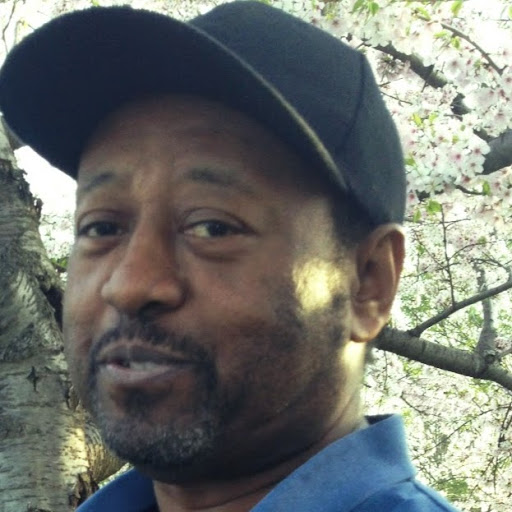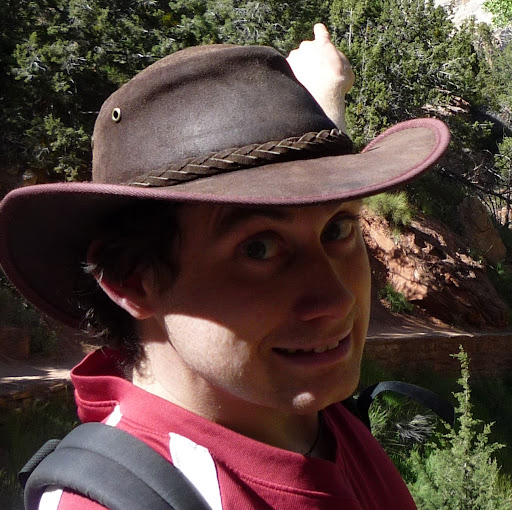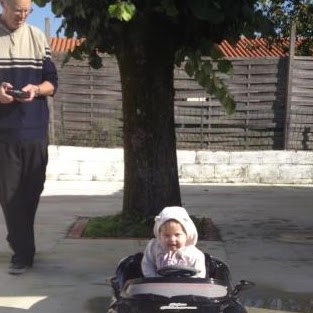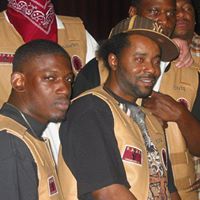Ronald J Miles
age ~68
from Greeneville, TN
- Also known as:
-
- Ronald John Miles
- Ron J Miles
- Dorothy Miles
- David Miles
- Michael Miles
Ronald Miles Phones & Addresses
- Greeneville, TN
- 1726 6Th St, Trenton, NJ 08638 • (609)4333664
- Ewing, NJ
- Kaneohe, HI
- Glenside, PA
- 1726 6Th St, Ewing, NJ 08638
Work
-
Company:Macy's inc2011
-
Position:District planner - men's/young men's
Education
-
School / High School:University of Mississippi- Oxford, MS1992
-
Specialities:B.B.A in Marketing
Specialities
Family Law
Lawyers & Attorneys

Ronald Miles - Lawyer
view sourceOffice:
Miles, Daroux, Zimmer & Sheard
Specialties:
Family Law
ISLN:
904805404
Admitted:
1985
Name / Title
Company / Classification
Phones & Addresses
Chief Executive
Netropolis
Short-Term Business Credit Institutions, Exce...
Short-Term Business Credit Institutions, Exce...
162 E. Wilkesbarre Street - Easton, East Greenville, PA 18041
Director
American Association of Professional Landmen, Inc
Professional Membership Organization
Professional Membership Organization
(817)8477700
Director, Managing Director
Aslan II Lincoln Gp, LLC
L & R PROPERTIES, LLC
Owner
Miles Ron Paper Hanging & Painting
Painting/Paper Hanging Contractor
Painting/Paper Hanging Contractor
732 Bustleton Pike, Southampton, PA 18954
Manager
1000 PACES, LLC
Manager
RONALD P. MILES INSURANCE AGENCY LLC
President,Chairman
MILES CONSTRUCTION CO
Medicine Doctors

Ronald H. Miles
view sourceSpecialties:
Congenital Cardiac Surgery (Thoracic Surgery)
Work:
Aspirus Medical GroupWausau Heart & Lung Surgeons
425 Pne Rdg Blvd STE 209, Wausau, WI 54401
(715)8470400 (phone), (715)8470401 (fax)
425 Pne Rdg Blvd STE 209, Wausau, WI 54401
(715)8470400 (phone), (715)8470401 (fax)
Education:
Medical School
University of Colorado School of Medicine at Denver
Graduated: 1988
University of Colorado School of Medicine at Denver
Graduated: 1988
Procedures:
Coronary Artery Bypass
Heart Valve Procedures
Pacemaker and Defibrillator Procedures
Septal Defect Repair
Thoracoscopy
Endarterectomy
Lung Biopsy
Removal Procedures on the Lungs and Pleura
Thoracic Aortic Aneurysm Repair
Heart Valve Procedures
Pacemaker and Defibrillator Procedures
Septal Defect Repair
Thoracoscopy
Endarterectomy
Lung Biopsy
Removal Procedures on the Lungs and Pleura
Thoracic Aortic Aneurysm Repair
Conditions:
Congenital Anomalies of the Heart
Lung Cancer
Thoracid Aortic Aneurysm
Lung Cancer
Thoracid Aortic Aneurysm
Languages:
English
Spanish
Spanish
Description:
Dr. Miles graduated from the University of Colorado School of Medicine at Denver in 1988. He works in Wausau, WI and specializes in Congenital Cardiac Surgery (Thoracic Surgery). Dr. Miles is affiliated with Aspirus Wausau Hospital.
Resumes

Ronald Miles Sausalito, CA
view sourceWork:
Macy's Inc
2011 to 2000
District Planner - Men's/Young Men's Charming Shoppes
Bensalem, PA
2010 to 2011
Merchandise Planner The Bon-Ton Stores Inc
Milwaukee, WI
2006 to 2010
Merchandise Planner Beall's Outlet Inc
Bradenton, FL
2004 to 2006
Planner / Analyst Saks Department Store Group
Birmingham, AL
2001 to 2004
Corporate Planner Universal Studios Recreation Group
Orlando, FL
1999 to 2001
Merchandise Planner Wal-Mart Stores Inc
Bentonville, AR
1989 to 1999
Merchandise Financial Planner
2011 to 2000
District Planner - Men's/Young Men's Charming Shoppes
Bensalem, PA
2010 to 2011
Merchandise Planner The Bon-Ton Stores Inc
Milwaukee, WI
2006 to 2010
Merchandise Planner Beall's Outlet Inc
Bradenton, FL
2004 to 2006
Planner / Analyst Saks Department Store Group
Birmingham, AL
2001 to 2004
Corporate Planner Universal Studios Recreation Group
Orlando, FL
1999 to 2001
Merchandise Planner Wal-Mart Stores Inc
Bentonville, AR
1989 to 1999
Merchandise Financial Planner
Education:
University of Mississippi
Oxford, MS
1992
B.B.A in Marketing
Oxford, MS
1992
B.B.A in Marketing
Googleplus

Ronald Miles

Ronald Miles

Ronald Miles

Ronald Miles

Ronald Miles

Ronald Miles

Ronald Miles

Ronald Miles
Work:
YouTube
Education:
Edmondson high school
Myspace
News

Fly-inspired device could help you hear better
view source- The pioneering work in discovering the fly's unusual hearing mechanism was done by Ronald Miles at Binghamton University and colleagues Ronald Hoy and Daniel Robert, who first described the phase amplification mechanism the fly uses to achieve its directional hearing some 20 years ago.
- Date: Jul 23, 2014
- Category: Sci/Tech
- Source: Google

How A Tiny Fly's Ears Could Help You Hear Better
view source- The teeter-totter mechanism in the fly ear was first explained by mechanical engineer Ronald Miles and neurobiologist Ronald Hoy in 1995 NPR's Morning Edition even featured a segment on the discovery way back in 1999.strived to create tiny, man-made microphones that mimic the teeter-totter mechanism in the fly ear. Within the past year, teams lead by Ronald Miles at Binghampton University and Miao Yu at the University of Maryland have also published directional microphone prototypes inspired by the Ormia ochracea.
- Date: Jul 22, 2014
- Category: Sci/Tech
- Source: Google

Ronald Miles
view source
Ronald Miles
view source
Ronald Miles
view source
Ronald Miles
view source
Ronald Miles
view source
Ronald Miles
view source
Ronald Miles
view source
Ronald Miles
view sourceClassmates

Ronald Miles
view sourceSchools:
Southern High School Baltimore MD 1969-1973
Community:
Virginia Caston

Ronald Miles
view sourceSchools:
Saint Mary of the Assumption School Baltimore MD 1979-1983
Community:
Elizabeth Reynolds, Dave Mcevoy

Ronald Miles
view sourceSchools:
Coloma Elementary School Coloma MI 1942-1948
Community:
William Hardy

Ronald Miles
view sourceSchools:
Rising Star High School Rising Star TX 1969-1973
Community:
Curtis Brasher, Ron Cohea, Dolores Fobes, Paula Azocar

Ronald Miles
view sourceSchools:
St. Francis High School Loretto KY 1964-1968
Community:
John Salsman

Ronald Miles
view sourceSchools:
St. Joseph's High School St. George's Peru 1995-1999
Community:
Ivan White, Ralph Howell, Deanna Barry, Kathy Foster

Ronald Miles
view sourceSchools:
Appalachia High School St. George's Peru 1995-1999
Community:
B.j. Nixon, Aaron Chaffey, Thomas Canning, Johanna White, Kristina Pitcher, Shawn Rubia

Ronald Miles
view sourceSchools:
Washington Elementary School Salt Lake City UT 1946-1953, Horace Mann Junior High School Salt Lake City UT 1954-1956
Community:
Connie Mangum, Annette Roman, Ricky Norwood
Youtube
Flickr
Plaxo

Ronald Miles, Jr.
view sourceBaltimore, MD
Get Report for Ronald J Miles from Greeneville, TN, age ~68



















